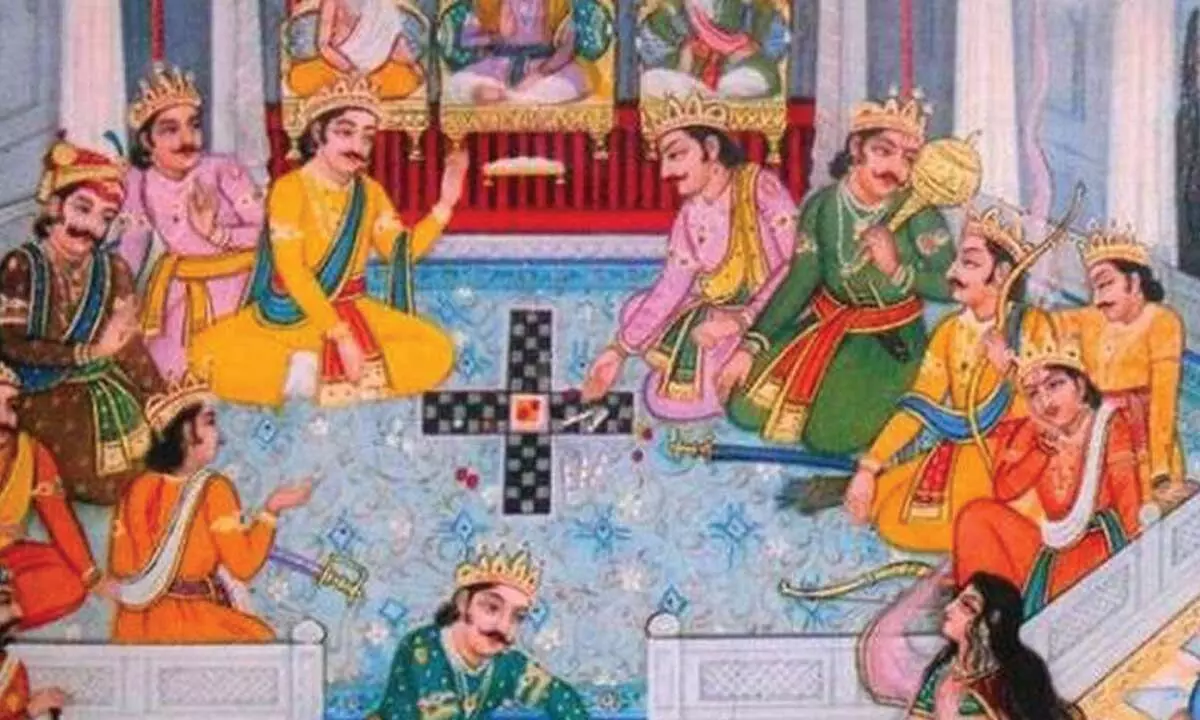Games of Seekers

It is the spirit of competition that makes games interesting.
It is the spirit of competition that makes games interesting. Every culture has its own games, and the spirit of competition is seen even in the indoor board games. Sometimes the games teach survival, as in the game of goats fighting a stronger and killer enemy, the tiger. Sometimes it is just a competition to reach a goal. The royal games are about the movement of soldiers, elephants, horses, the queen and the king. Capturing the rival king is the target. Great betting existed in the olden days, as it is now. Pandavas lost their empire in such a game of dice. The games kept up the spirit and skills.
The Indian sages did not lag in devising their own games to teach spirituality. The competition here is not external, but it is with the monkey-nature of the mind. The sages compare the mind to a monkey which jumps from branches to branches. The mind jumps from one desire to another. Sometimes it jumps to forbidden areas and falls. Training the mind is an inner battle. The teachers call it sadhana-samar. What we call a spiritual path is nothing but a series of steps in taming the mind. As children we used to see a large board, with the name parama-pada-sopana-patam (in Telugu), in the house of my maternal grandfather, and the elders used to play. Parama-padam is the highest goal in human life, which is liberation. The game is also known as Vaikuntha pali, Gyan-chauper in Hindi and is prevalent in all regions of the country. The terms used are such as, sama, dama, titiksha, truthfulness, devotion and so on, which we never understood at that time. Even now, it may not make sense to many who are not acquainted with some basics of Indian ethics.
This game is familiar to most of us as snakes and ladders, because the British modified it and took it to England in that name. Our game-sheet is designed to teach moral behaviour to the young. It has squares, numbering 121 or 100, and it can be played by four people. All players start at the left-hand bottom of the sheet and move horizontally from left to right and reach the next line. They move as per the number which they get on the dice. In the next line the person moves from right to left. Numbers are marked to show the path. There are pictures of various animals – a monkey, dog, cat and such others – in the bottom line showing the animal nature of a person.
The starting point is the monkey. As he slowly moves up, he reaches the box labeled ‘good nature’. This takes him up a small ladder to an upper line. He moves further and may reach the box named ‘devotion’ or ‘dispassion’. This is a ladder which takes him to another upper line. As he moves ahead, unfortunately, he befriends a bad guy and falls into the mouth of a snake, which takes him down to the tail of the snake in a lower line. Snakes are named after different demons whom we know. They symbolize various negative traits, such as greed, violence, lust, laziness, pride and others. Incidentally, the game teaches what each demon symbolizes. For instance, Ravana symbolizes lust; Mahisha symbolizes greed and over-ambition; Karkotaka symbolizes cruelty and so do others.
Among the ladders (good practices), controlling the senses and actions is the primary step. Controlling the mind is the next step. Inculcating good qualities like austerity, good company, and meditation are the next ladders. More advanced ladders are about going to a guru and learning the scriptures. Simultaneously, practice of tapas is prescribed, where another ladder takes him up to the higher place. After all this, if the person falls into the mouth of the snake named Ravana or Mahisha, he comes down all the way down to the beginning squares. Thus, moving carefully, the person reaches the top square, nirvana, liberation. The highest goal is the jiva merging into the Brahman or Shiva, or Narayana, or Shakti, as per one’s own tradition. A marvellous way of teaching the basics of Vedanta!
(The writer is a former
DGP, Andhra Pradesh)
Aravinda Rao

















